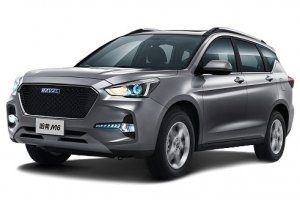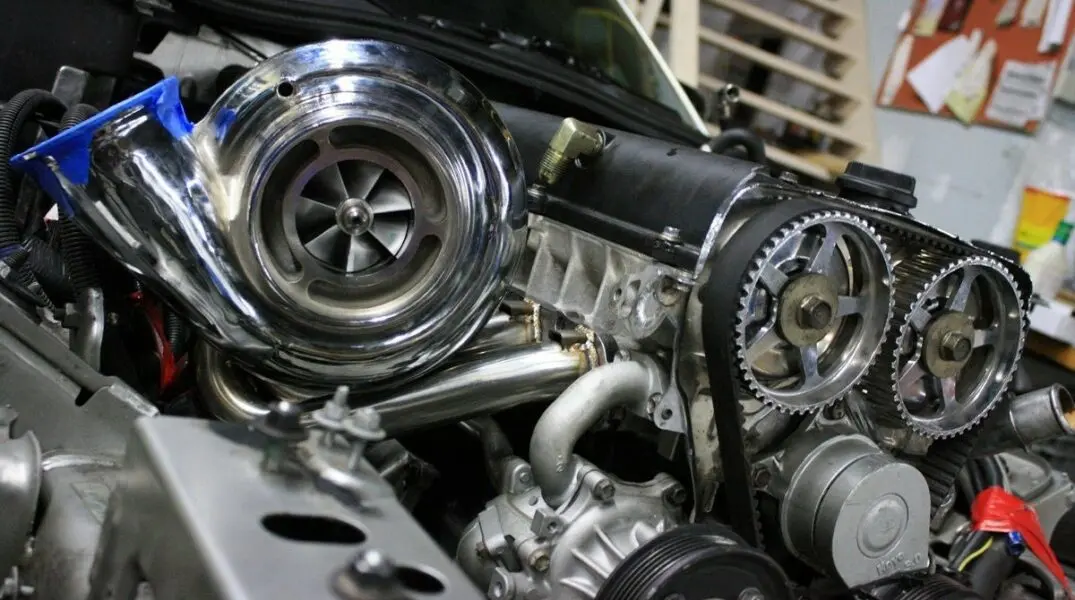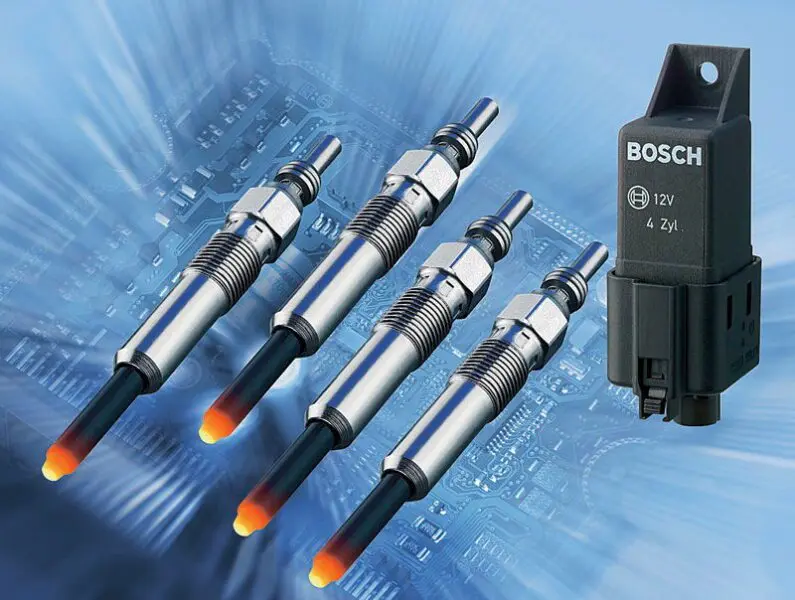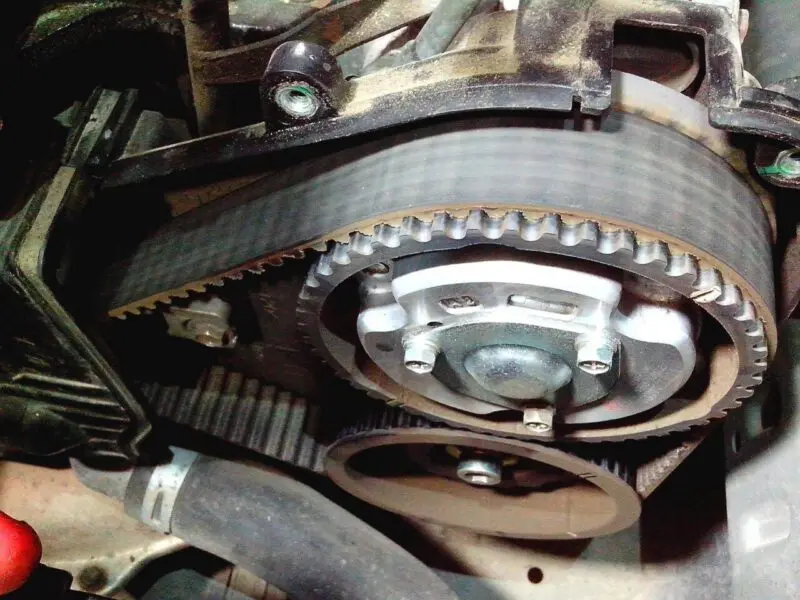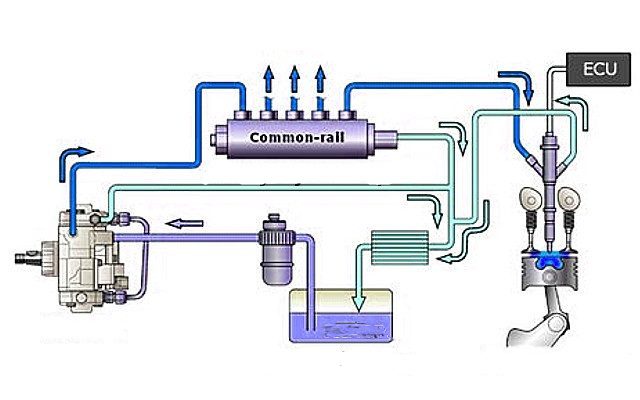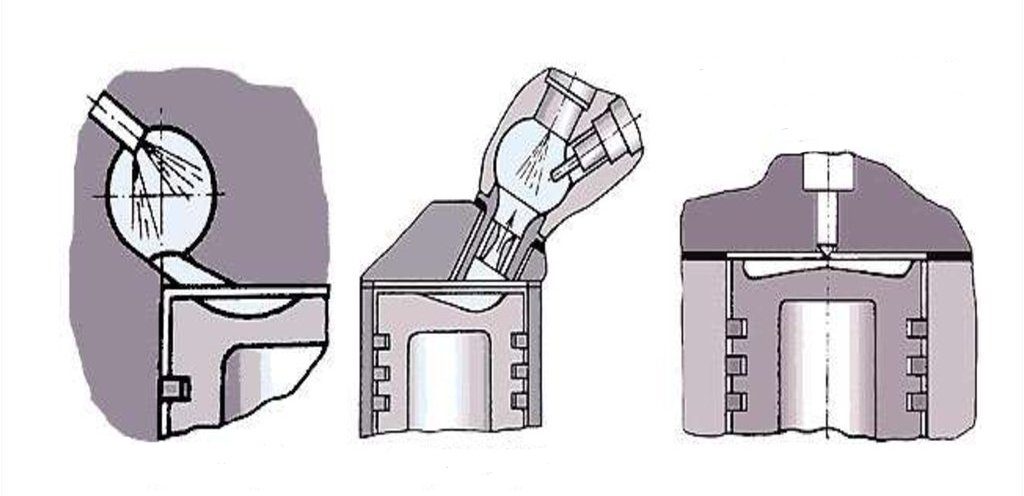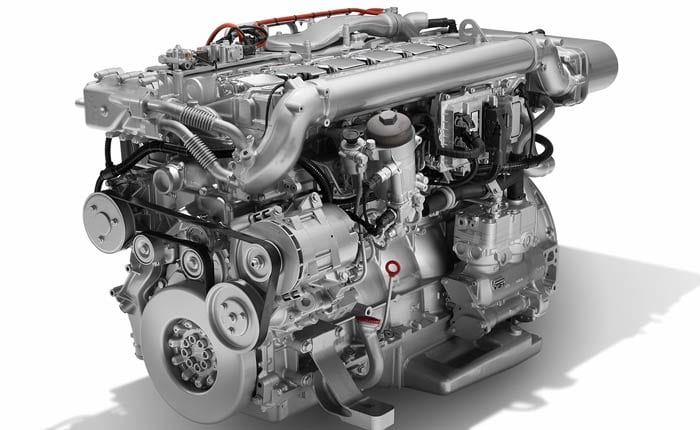
Diesel engines: features of work
Content
Under the hood, a modern car will have one of three types of power units. It is a gasoline, electric or diesel engine. We have already discussed the principle of operation and the device of a motor that runs on gasoline. in another article.
Now we will focus on the features of a diesel engine: what parts it consists of, how it differs from a gasoline analogue, and also consider the features of starting and operating this internal combustion engine in different conditions.
What is a diesel car engine
First, a little theory. A diesel engine is a type of piston power unit that looks the same as a gasoline engine. His budova will also practically not differ.
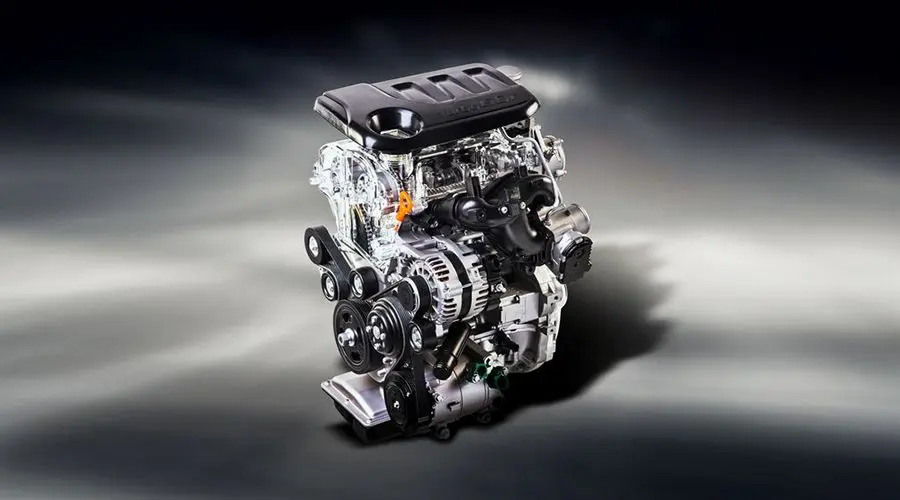
It will mainly consist of:
- Cylinder block. This is the unit body. The holes and cavities necessary for its operation are made in it. The outer wall has a cooling jacket (a cavity that is filled with liquid in the assembled motor to cool the housing). In the central part, the main holes are made, which are called cylinders. They burn fuel. Also, the block design provides holes for connection with the help of pins of the block itself and its head, in which the gas distribution mechanism is located.
- Pistons with connecting rods. These elements have a design identical to those of a gasoline engine. The only difference is that the piston and connecting rod are made more durable to withstand high mechanical loads.
- Crankshaft. The diesel engine is equipped with a crankshaft that has a similar design to that of an internal combustion engine that runs on gasoline. The only difference is in what design of this part the manufacturer uses for a particular modification of the motor.
- Balancing shaft. Small electric generators often use a single cylinder diesel. It works on a push-pull principle. Since it has one piston, it creates a strong vibration when the HTS is burned. In order for the motor to run smoothly, a balancing shaft is included in the device of the single-cylinder unit, which compensates for sudden surges in mechanical energy.
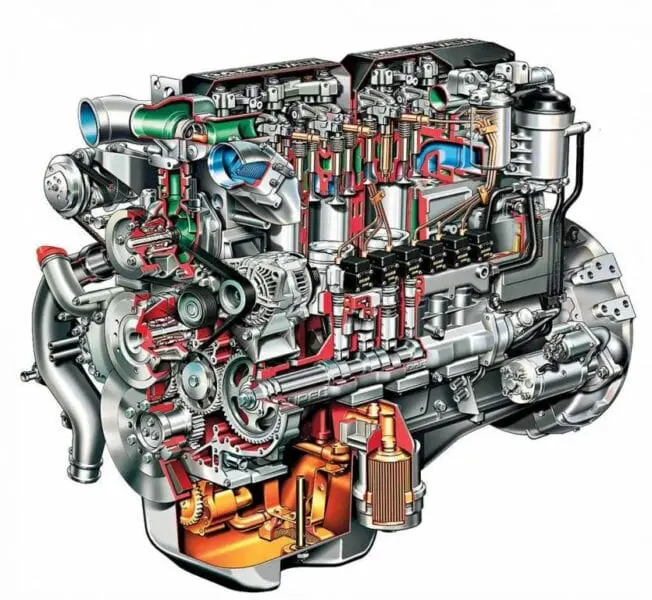
Today, diesel vehicles are gaining great popularity due to the introduction of innovative technologies that allow vehicles to meet environmental standards and the needs of the sophisticated motorist. If earlier the diesel unit was mainly received by freight transport, today a passenger car is often equipped with such an engine.
It is estimated that nearly one in every XNUMX cars sold in the United States will run on heavy fuel oil. As for Europe, diesel engines are even more popular in this market. Almost half of the cars sold under the hood have this type of motor.
Do not refuel gasoline in a diesel engine. It relies on its own fuel. Diesel fuel is an oily combustible liquid, the composition of which is similar to kerosene and heating oil. Compared to gasoline, this fuel has a lower octane number (what this parameter is, is described in detail in another review), therefore, its ignition occurs according to a different principle, different from the combustion of gasoline.
Modern units are being improved so that they consume less fuel, create less noise during operation, the exhaust gases contain less harmful substances, and the operation is as simple as possible. For this, most systems are controlled by electronics, and not by different mechanisms.
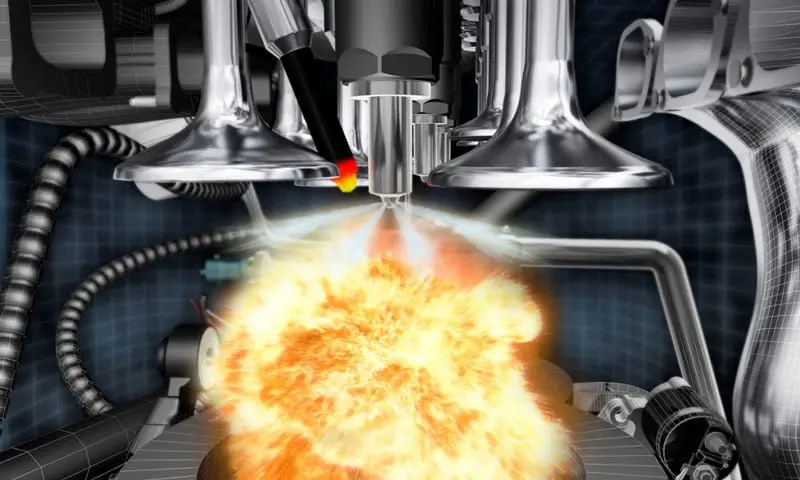
In order for light vehicles with a diesel engine to meet a high environmental standard, it is equipped with additional systems that ensure better combustion of the air-fuel mixture and the use of all the energy released during this process.
The latest generation of some car models receive the so-called clean diesel. This concept describes vehicles in which the exhaust gases are almost identical to the products of gasoline combustion.
The list of such systems includes:
- Intake system. Depending on the design of the unit, it can consist of several intake flaps. Their purpose is to ensure the supply of air and the formation of the correct vortex of the flow, which makes it possible to better mix diesel fuel with air in different modes of operation of the internal combustion engine. When the engine starts and is running at low rpm, these dampers will be closed. As soon as the revs increase, these elements open. This mechanism allows you to reduce the content of carbon monoxide and hydrocarbons that did not have time to burn, which often happens at low speeds.
- Power boost system. One of the most effective ways to increase the power of the internal combustion engine is to install a turbocharger on the intake tract. In some models of modern transport, a turbine is installed that can change the geometry of the internal path. There is also a turbo compound system, which is described here.

- Launch optimization system. Compared to the gasoline counterpart, these motors are more capricious in terms of operating conditions. For example, a cold internal combustion engine starts up worse in winter, and old modifications in severe frost do not start without preliminary heating at all. To make starting in such conditions possible or as fast as possible, the car receives prestarting heating. For this purpose, a glow plug is installed in each cylinder (or in the intake manifold), which heats the internal volume of the air, due to which its temperature during compression fully reaches the index at which diesel fuel can ignite on its own. Some vehicles may have a system that heats up the fuel before it enters the cylinders.

- Exhaust system. It is designed to reduce the amount of pollutants in the exhaust. For example, the exhaust flow passes through particulate filterwhich neutralizes unburned hydrocarbons and nitrogen oxides. Damping of exhaust gases occurs in the resonator and the main silencer, but in modern engines the flow of exhaust gases is already uniform from the beginning, so some motorists purchase active automobile exhaust (the report on the device is described here)
- Gas distribution system. It is needed for the same purpose as in the gasoline version. When the piston completes the appropriate stroke, the inlet or outlet valve should open / close in a timely manner. The timing device includes a camshaft and other important parts that provide timely execution of phases in the motor (intake or exhaust). The valves in the diesel engine are reinforced, since they have an increased mechanical and thermal load.

- Exhaust gas recirculation. This system provides complete removal of nitrogen oxide by cooling some of the exhaust gases and returning them to the intake manifold. The operation of this device may differ depending on the design of the unit.
- Fuel system. Depending on the design of the internal combustion engine, this system may differ slightly. The main element is the high-pressure fuel pump, which provides an increase in the fuel pressure so that, at high compression, the injector is capable of injecting diesel fuel into the cylinder. One of the latest developments in diesel fuel systems is the CommonRail. A little later, we will take a closer look at its structure. Its peculiarity is that it allows you to accumulate a certain volume of fuel in a special tank for its stable and smooth distribution over the nozzles. The electronic type of control allows the use of different injection modes to achieve maximum efficiency at different engine speeds.

- Turbocharger. In a standard motor, a special mechanism is installed on the exhaust manifold with rotating blades located in two different cavities. The main impeller is driven by the exhaust gas stream. The rotating shaft simultaneously activates the second impeller, which belongs to the intake tract. As the second element rotates, the fresh air pressure increases in the intake system. As a result, more volume enters the cylinder, which increases the power of the internal combustion engine. Instead of a classic turbine, a turbocharger is installed on some cars, which is already powered by electronics and allows an increase in air flow, regardless of the speed of the unit.
In technical terms, a diesel engine differs from a gasoline unit in the way of combustion of an air-fuel mixture. In the case of a standard gasoline engine, fuel is often mixed in the intake manifold (some modern modifications have direct injection). Diesels work exclusively by spraying diesel fuel directly into the cylinders. To prevent the BTS from igniting prematurely during compression, it must be mixed at the moment when the piston is ready to start performing the stroke of the working stroke.
Fuel system device
The work of the fuel system is reduced to supplying the required portion of diesel fuel at the right time. In this case, the pressure in the nozzle should significantly exceed the compression ratio. The compression ratio of a diesel engine is much higher than that of a gasoline unit.
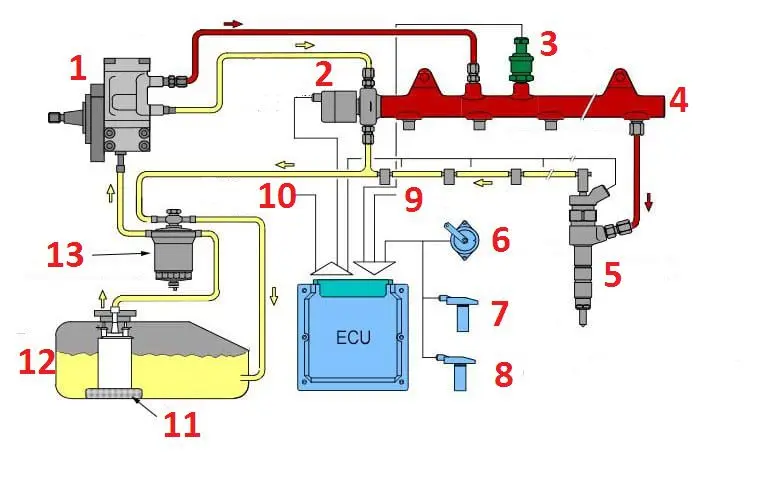
Additionally, we suggest reading about what is compression ratio and compression... This fuel supply system, especially in its modern design, is one of the most expensive elements in the machine, because its parts ensure the high precision of the unit. The repair of this system is very difficult and expensive.
These are the main elements of the fuel system.
TNVD
Any fuel system must have a pump. This mechanism sucks in diesel fuel from the tank and pumps it into the fuel circuit. To make the car economical in terms of fuel consumption, its supply is electronically controlled. The control unit reacts to pressing the gas pedal and to the operating mode of the engine.
When the driver presses the accelerator pedal, the control module independently determines to what extent it is necessary to increase the volume of fuel, change the intake time. To do this, a large list of algorithms is stitched into the ECU at the factory, which activate the necessary mechanisms in each individual case.
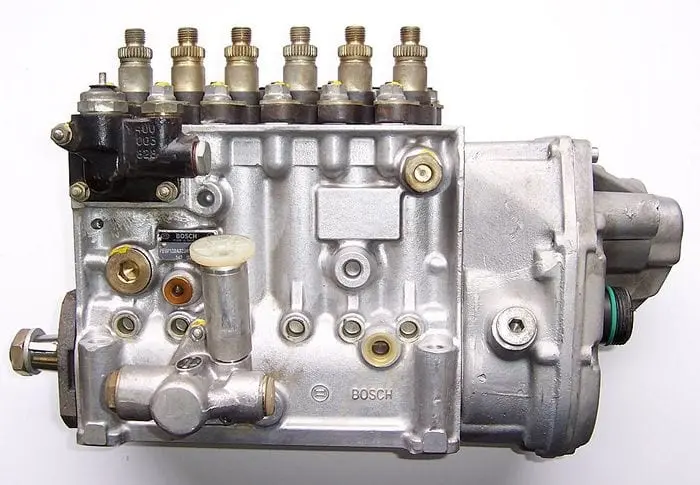
The fuel pump creates constant pressure in the system. This mechanism is based on a plunger pair. Details of what it is and how it works is described separately... In modern fuel systems, a distribution type of pumps is used. They are compact in size, and in this case the fuel will flow more evenly, regardless of the operating mode of the unit. You can read more about the work of this mechanism. here.
Nozzles
This part ensures that the fuel is sprayed directly into the cylinder when the air is already compressed in it. Although the efficiency of this process directly depends on the pressure of the fuel, the design of the atomizer itself is of great importance.
Among all modifications of nozzles, there are two main types. They differ in the type of torch that is generated during spraying. There is a type or multi-point atomizer.
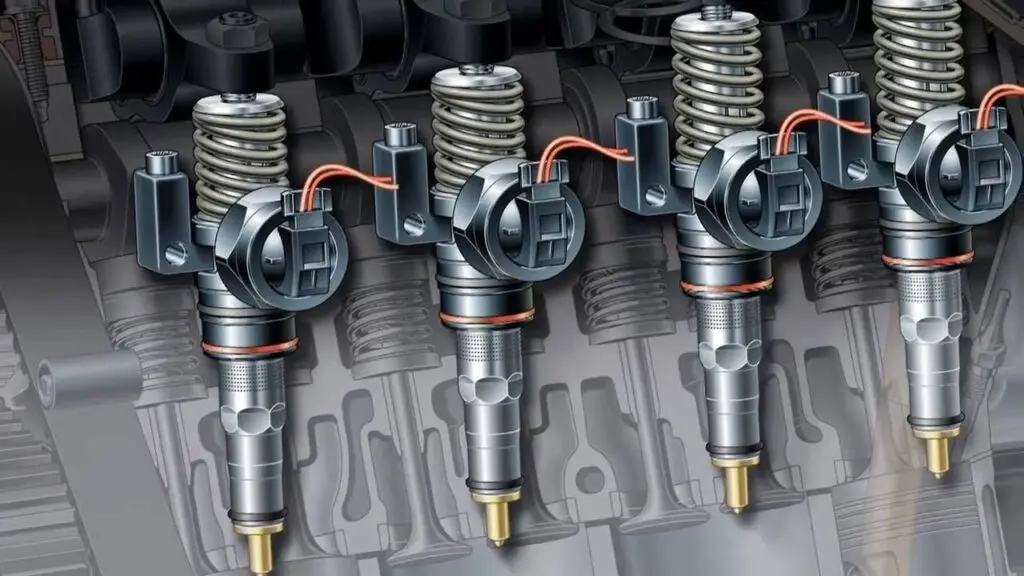
This part is installed in the cylinder head, and its atomizer is located inside the chamber, where fuel is mixed with hot air and ignites spontaneously. Considering the high thermal loads, as well as the frequency of the reciprocating movements of the needle, a heat-resistant material is used for the manufacture of the nozzle atomizer.
Fuel filter
Since the design of the high-pressure fuel pump and injectors contains many parts with very minimal clearances, and they themselves must be well lubricated, high requirements are imposed on the quality (its purity) of diesel fuel. For this reason, the system contains expensive filters.
Each type of engine has its own fuel filter, since all types have their own throughput and degree of filtration. In addition to removing foreign particles, this element must also clean the fuel from water. This is condensation that forms in the tank and mixes with the combustible material.
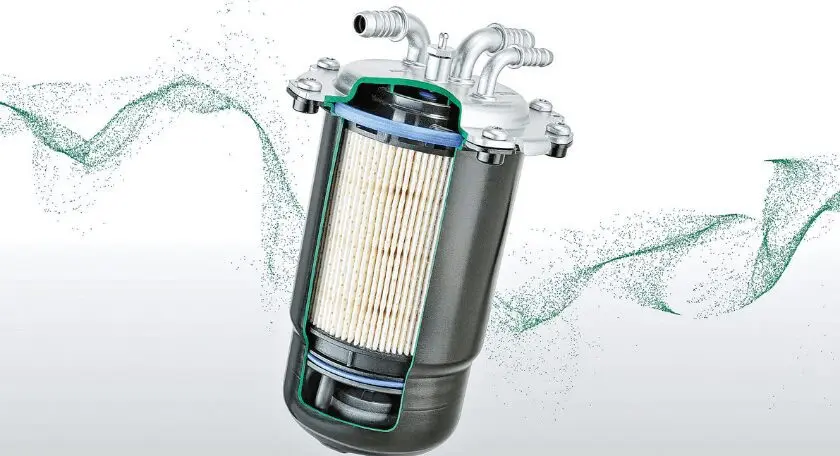
To prevent water from accumulating in the sump, there is often a drain hole in the filter. Occasionally an air lock can form in the fuel line. To remove it, some filter models have a small hand pump.
In some car models, a special device is installed that allows you to heat up diesel fuel. During winter, this type of fuel often crystallizes, forming paraffin particles. This will determine whether the filter can sufficiently pass fuel to the pump, which provides an easy start of the internal combustion engine in cold weather.
Principle of operation
The operation of a diesel internal combustion engine is based on the same principle of expansion of the air-fuel mixture that burns in the chamber as in a gasoline unit. The only difference is that the mixture is ignited not by a spark from a spark plug (a diesel engine does not have spark plugs at all), but by spraying a portion of fuel into a hot medium due to strong compression. The piston compresses the air so strongly that the cavity heats up to about 700 degrees. As soon as the nozzle atomizes the fuel, it ignites and releases the required energy.

Like gasoline units, diesels also have two main types of two-stroke and four-stroke. Let's consider their structure and principle of operation.
Four-stroke cycle
The four-stroke automotive unit is the most common. This is the sequence in which such a unit will work:
- Inlet. When the crankshaft turns (when the engine starts, this happens due to the operation of the starter, and when the engine is running, the piston performs this stroke due to the work of adjacent cylinders), the piston begins to move downward. At this moment, the inlet valve opens (it can be one or two). A fresh portion of air enters the cylinder through the open hole. Until the piston reaches bottom dead center, the intake valve remains open. This completes the first measure.
- Compression. With further rotation of the crankshaft by 180 degrees, the piston begins to move upward. At this point, all valves are closed. All the air in the cylinder is compressed. To prevent it from getting into the sub-piston space, each piston has several O-rings (in detail about their device is described here). As we move to the top dead center, due to the sharply increasing pressure, the air temperature rises to several hundred degrees. The stroke ends when the piston is in the highest position.
- Working stroke. When the valves are closed, the injector delivers a small portion of fuel, which immediately ignites due to the high temperature. There are fuel systems that divide this small portion into several smaller fractions. Electronics can activate this process (if provided by the manufacturer) in order to increase the efficiency of the internal combustion engine in different operating modes. As the gases expand, the piston is pushed to bottom dead center. Upon reaching BDC, the cycle ends.
- Release. The last turn of the crankshaft raises the piston up again. At this moment, the exhaust valve is already opening. Through the hole, the gas stream is removed to the exhaust manifold, and through it to the exhaust system. In some engine operating modes, the intake valve may also open slightly for better cylinder ventilation.
In one revolution of the crankshaft, two strokes are performed in one cylinder. Any piston engine operates according to this scheme, regardless of the type of fuel.
Two-stroke cycle
In addition to four-strokes, there are also two-stroke modifications. They differ from the previous version in that two strokes are performed in one piston stroke. This modification works due to the design features of the two-stroke cylinder block.
Here is a sectional drawing of a 2-stroke motor:
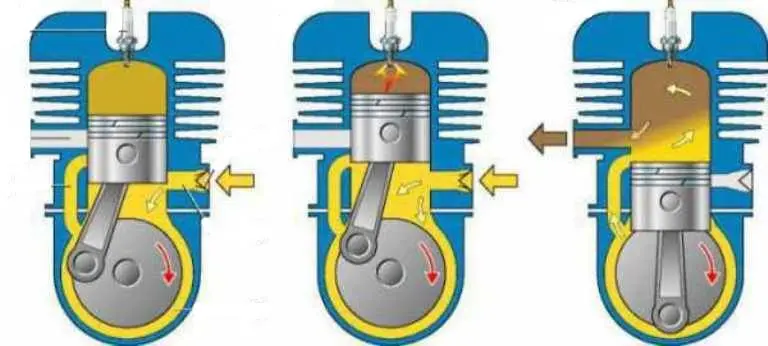
As can be seen from the figure, when the piston, after the ignition of the air-fuel mixture, moves to the bottom dead center, it first opens the outlet, where the exhaust gases go. A little later, the inlet opens, due to which the chamber is filled with fresh air, and the cylinder is purged. Since diesel fuel is sprayed into the compressed air, it will not enter the exhaust system while the cavity is being purged.
Compared to the previous modification, the power of the two-stroke is 1.5-1.7 times higher. However, the 4-stroke counterpart has increased torque. Despite the high power, the two-stroke internal combustion engine has one significant drawback. Its tuning has less effect compared to a 4-stroke unit. For this reason, they are much less common in modern cars. Forcing this type of engine by increasing the crankshaft speed is a rather complicated and ineffective process.
Among diesel engines, there are many effective options that are used on different types of vehicles. One of the modern boxer-shaped two-stroke engines is the Hofbauer engine. You can read about him separately.
Types of Diesel Engines
In addition to the features in the use of secondary systems, diesel engines have structural differences. Basically, this difference is observed in the structure of the combustion chamber. Here is their main classification according to the geometry of this department:
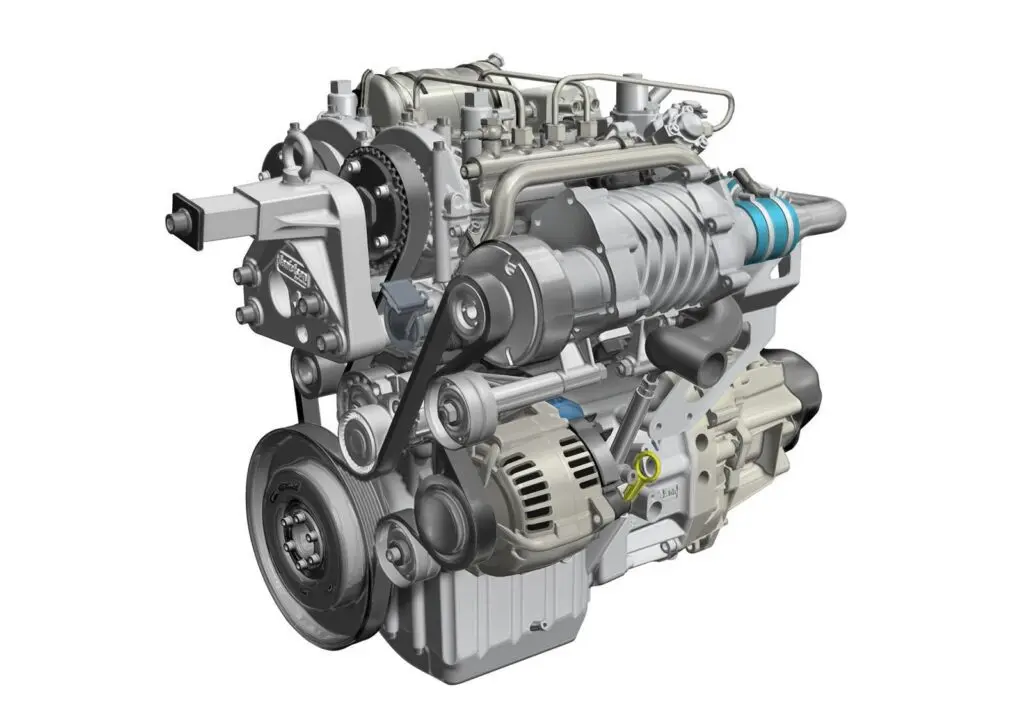
- Undivided camera. Another name for this class is direct injection. In this case, diesel fuel is sprayed in the space above the piston. These engines require special pistons. Special pits are made in them, which form the combustion chamber. Typically, such a modification is used in units with a large working volume (how it is calculated, read separately), and which do not develop high turnovers. The higher the rpm, the more noise and vibration the motor will be. More stable operation of such units is ensured by the use of electronically controlled injection pumps. Such systems are capable of providing double fuel injection, as well as optimizing the combustion process of the VTS. Thanks to the use of this technology, these motors have stable operation at up to 4.5 thousand revolutions.

- Separate chamber. This combustion chamber geometry is used in most modern powertrains. A separate chamber is made in the cylinder head. It has a special geometry that forms a vortex during the compression stroke. This allows the fuel to mix more efficiently with air and burn better. In this design, the engine runs smoother and less noisy, since the pressure in the cylinder builds up smoothly, without sudden jerks.
How is the launch
The cold start of this type of motor deserves special attention. Since the body and the air entering the cylinder are cold, when the portion is compressed, it is not able to heat up sufficiently for the diesel fuel to ignite. Previously, in the cold weather, they fought with this with a blowtorch - they heated the engine itself and the fuel tank so that the diesel fuel and oil were warmer.
Also, in the cold, diesel fuel thickens. Manufacturers of this type of fuel have developed a summer and winter grade. In the first case, diesel fuel ceases to be pumped through the filter and through the pipeline at a temperature of -5 degrees. Winter diesel does not lose its fluidity and does not crystallize at -45 degrees. Therefore, when using fuel and oil appropriate for the season, there will be no problems with starting a modern car.
In a modern car, there are pre-heating systems. One of the elements of such a system is the glow plug, which is often installed in the cylinder head in the area of fuel atomization. Details about this device are described here... In short, it provides a quick glow to prepare the ICE for launch.
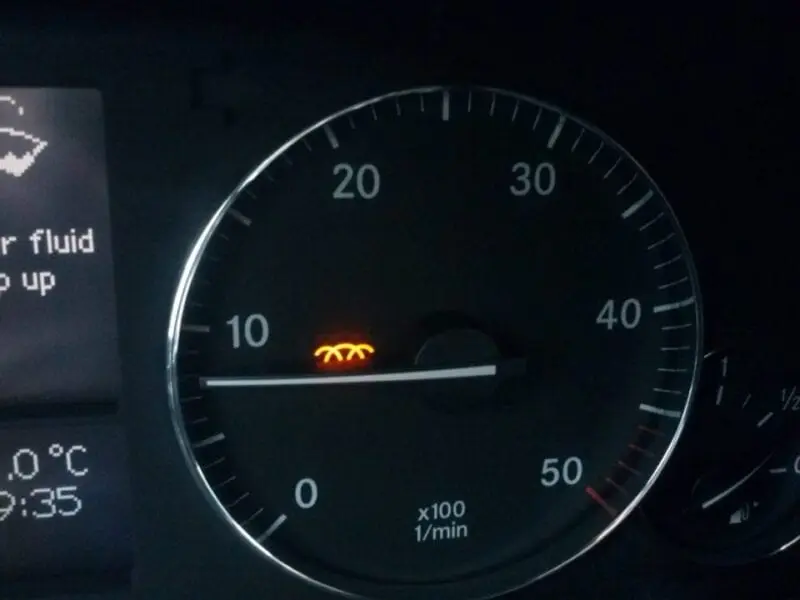
Depending on the model of the candle, it can heat up to almost 800 degrees. This process usually takes a few seconds. When the engine has warmed up enough, the spiral indicator on the dashboard starts flashing. To keep the motor running stably until it reaches operating temperature, these candles continue to heat the incoming air for about 20 seconds.
If the car is equipped with a start button for the engine, the driver does not need to navigate the indicators, waiting for when to turn the starter. After pressing the button, the electronics will independently wait for the time required to heat the air in the cylinders.
Regarding the heating of the car interior, many motorists notice that in winter it heats up more slowly than the gasoline counterpart. The reason is that the efficiency of the unit does not allow it to quickly heat up itself. For those who like to get into an already warm car, there are systems for remote start of the internal combustion engine.
Another option is a pre-heating system for the passenger compartment, the equipment of which uses diesel fuel exclusively to heat the passenger compartment. Additionally, it heats up the coolant, which will help in the future when the internal combustion engine is warming up.
Turbocharging and Common-Rail
The main problem with conventional motors is the so-called turbo pit. This is the effect of a slow response of the unit to pressing the pedal - the driver presses on the gas, and the internal combustion engine seemed to think for a while. This is due to the fact that the flow of exhaust gases only at certain engine speeds activates the impeller of a standard turbine.

The turbo diesel unit receives a turbocharger instead of a standard turbine. Details about this mechanism are described in othersуsecond article, but in short, it supplies an additional volume of air to the cylinders, thanks to which it is possible to take off decent power even at low revs.
However, turbodiesel also has a significant disadvantage. The motor compressor has a small working life. On average, this period is about 150 thousand kilometers of car mileage. The reason is that this mechanism is constantly working under conditions of increased thermal stress, as well as at constantly high speeds.
Maintenance of this device is only for the owner of the machine to constantly adhere to the manufacturer's recommendations regarding the quality of the oil. If a turbocharger fails, it should be replaced rather than repaired.
Many modern cars are equipped with a Common-Rail fuel system. It is described in detail about her separately... If it is possible to choose just such a modification of the car, then the system allows you to optimize the fuel supply in a pulsed mode, which has a positive effect on the efficiency of the internal combustion engine.
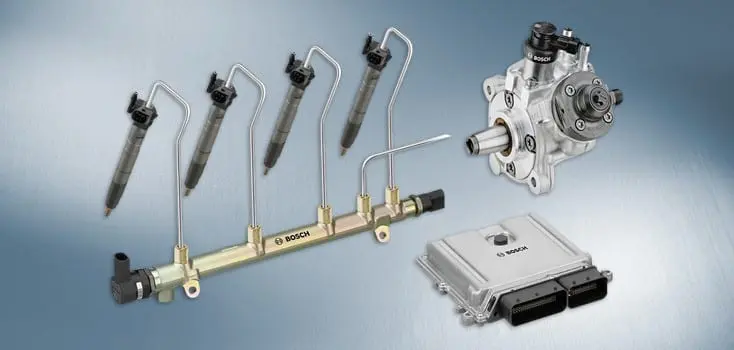
This is how this type of battery fuel system works:
- 20 degrees before the piston reaches TDC, the injector sprays 5 to 30 percent of the main portion of the fuel. This is a pre-injection. It forms an initial flame, due to which the pressure and temperature in the cylinder increases smoothly. This process reduces shock loads on the unit parts and ensures better fuel combustion. This pre-injection is used on engines whose environmental performance complies with the Euro-3 standard. Starting from the 4th standard, a multi-stage pre-injection is performed in the internal combustion engine.
- 2 degrees before the TDC position of the piston, the first part of the main portion of the fuel is supplied. This process takes place in the same way as in a conventional diesel engine without a fuel rail, but without a pressure surge, since at this stage it is already high due to the combustion of a preliminary portion of diesel fuel. This circuit can reduce motor noise.
- For a while, the fuel supply is stopped so that this portion is completely burned out.
- Next, the second part of the fuel portion is sprayed. Due to this separation, the entire portion is burned to the end. Plus, the cylinder works longer than in a classic unit. This results in high torque at minimum consumption and low emissions. Also, no shocks occur in the internal combustion engine, so it does not make a lot of noise.
- Before the outlet valve opens, the injector performs post-injection. This is the rest of the fuel. It is already on fire in the exhaust tract. On the one hand, this combustion method removes soot from the inside of the exhaust system, and on the other hand, it increases the power of the turbocharger, which allows the turbo lag to be smoothed out. A similar stage is used on units that comply with the Euro-5 eco-standard.
As you can see, the installation of the storage fuel system allows for multi-pulse fuel supply. Thanks to this, almost every characteristic of a diesel engine is improved, which makes it possible to bring its power closer to that of a gasoline unit. And if a turbocharger is installed in the car, then this tool made it possible to come up with an engine that is superior to gasoline.
This advantage of the modern turbodiesel makes it possible to increase the popularity of diesel passenger cars. By the way, if we talk about the fastest cars with a diesel unit, then in 2006 in the Bonneville salt desert the speed record was broken on the JCB Dieselmax prototype. This car accelerated to 563 kilometers per hour. The power plant of the car was equipped with a Common-Rail fuel rail.
Advantages and disadvantages of using diesel engines
If you select the right fuel and oil, the unit will start up stably, regardless of weather conditions. You can check which fluids should be used in this case from the manufacturer's recommendations.

The solid fuel power unit differs from the gasoline counterpart in high efficiency. Each new model becomes less noisy (and the sounds will be muffled not so much by the exhaust system as by the features of the engine itself), more powerful and efficient. These are the advantages of a diesel engine:
- Economical. Compared to a conventional gasoline engine, any modern diesel engine with an identical volume will consume less fuel. The efficiency of the unit is explained by the peculiarity of the combustion of the air-fuel mixture, especially if the fuel system is of the accumulator type (Common Rail). In 2008, a competition for efficiency took place between the BMW5 and the Toyota Prius (a hybrid that is famous for its economy, but runs on gasoline). At the London-Geneva distance, a BMW, which is 200 kilograms heavier, spent almost 17 kilometers per liter of fuel, and a hybrid averaged 16 kilometers. It turns out that for 985 kilometers a diesel car spent about 58 liters, and a hybrid - almost 62 liters. Moreover, if you consider that a hybrid is able to save decent money compared to a purely gasoline car. We add to this a small difference in the cost of these types of fuel, and we get an additional amount for new spare parts or car maintenance.
- High torque. Due to the peculiarities of the injection and combustion of the VTS, even at low speeds, the engine demonstrates the power sufficient to move the vehicle. Although many modern cars are equipped with a stability control system and other systems that stabilize the operation of the car, the diesel engine allows the driver to change gears without bringing it to higher revs. This makes driving even easier.
- Modern diesel internal combustion engines provide minimal carbon monoxide emissions, putting such a car on the same level as its petrol counterpart (and in some cases even a step higher).
- Due to the lubricating properties of diesel fuel, this unit is more durable and has a long service life. Also, its strength is due to the fact that in the manufacture of the manufacturer uses more durable materials, strengthening the design of the motor and its parts.
- On the track, a diesel car is practically indistinguishable in dynamics from a gasoline analogue.
- Due to the fact that diesel fuel burns less willingly, such a car is safer - a spark will not provoke an explosion, therefore, military equipment is more often equipped with diesel units.
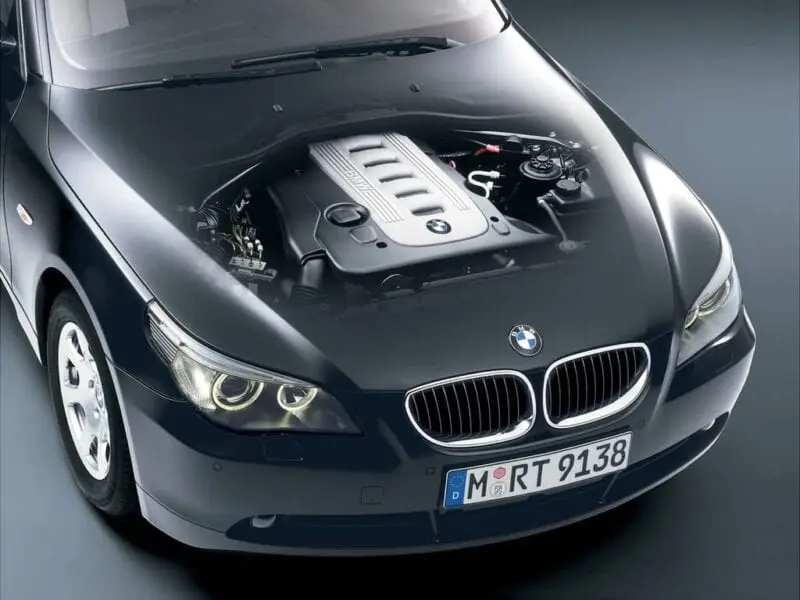
Despite their high efficiency, diesel engines have several disadvantages:
- Old cars are equipped with motors in which there is an unseparated chamber, so they are quite noisy, since the combustion of MTC occurs with sharp jolts. To make the unit less noisy, it must have a separate chamber and a storage fuel system that provides multi-stage diesel fuel injection. Such modifications are expensive, and in order to repair such a system, you need to look for a qualified specialist. Also, in modern fuels since 2007, less sulfur has been used, so that the exhaust does not have an unpleasant, pungent smell of rotten eggs.
- The purchase and maintenance of a modern diesel car is available to motorists with above average incomes. The search for parts for such vehicles is complicated only by their cost, but cheap parts are often of poor quality, which can lead to a quick breakdown of the unit.
- Diesel fuel is poorly washed, so you need to be extremely careful at the gas station. Experienced motorists recommend using disposable gloves, because the smell of diesel fuel on their hands does not disappear for a long time, even after thorough hand washing.
- In winter, the car interior needs to be warmed up longer, since the engine is in no hurry to give off heat.
- The device of the unit includes a large number of additional parts, which complicates the repair. Because of this, sophisticated modern equipment is required for adjustment and repair.
To decide on the power unit, you first need to decide in what mode the car will be operated. If the car will often cover long distances, then diesel is the best option, as it will provide an opportunity to save a little on fuel. But for short trips, it is ineffective, since you won't be able to save a lot, and you will have to spend much more on maintenance than on a gasoline unit.
At the end of the review, we offer a video report on the principle of operation of a diesel engine:
